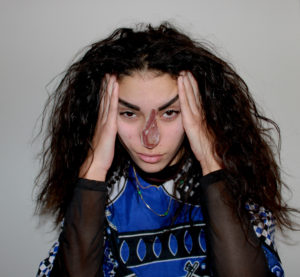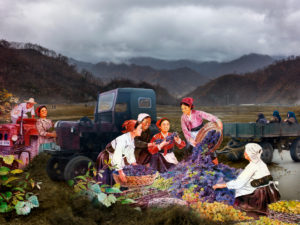I have collected an variety of archival photographs on my house and its history and well as creating a response to these photographs by taking inspiration from these archival images. I will be experimenting with different ways to demonstrate the changes and development within the house as well as how political landscape links to the set of photographs.
Technique 1
For this technique I will be placing the new photographs over the archival photographs and vice versa in order to create a contrast between the photographs as well as drawing similarities between them. I am going through with this by using photoshop. I start off by placing both photographs in the same photoshop tab.
I then choose an area of one of the photographs to crop in order to place over the other photograph. This area can be any detail of the property that shows similarity/contrasts between the now and then.
Once a section is cropped I will then focus on aligning this cropped part of the photograph with the other photograph in order to create a collage type photograph. I will do this with multiple photographs that match/line-up with the archival photograph to show as much contrast as possible. If I go through with this technique I will edit features such as the brightness of the photographs before hand to ensure that the photographs fit together well. I will also spend more time aligning the photographs to create the most accurate collage possible. I will also look at cropping and inserting smaller parts of photographs in order to provide more detail.
I think that this technique allows me to creatively place the different photographs in different combinations to create different photographs and interesting perspectives. One worry that I have with this technique is that the archive photographs may not fit in with the new photographs but I will overcome this problem by readjusting properties of the photographs when it comes to final editing.
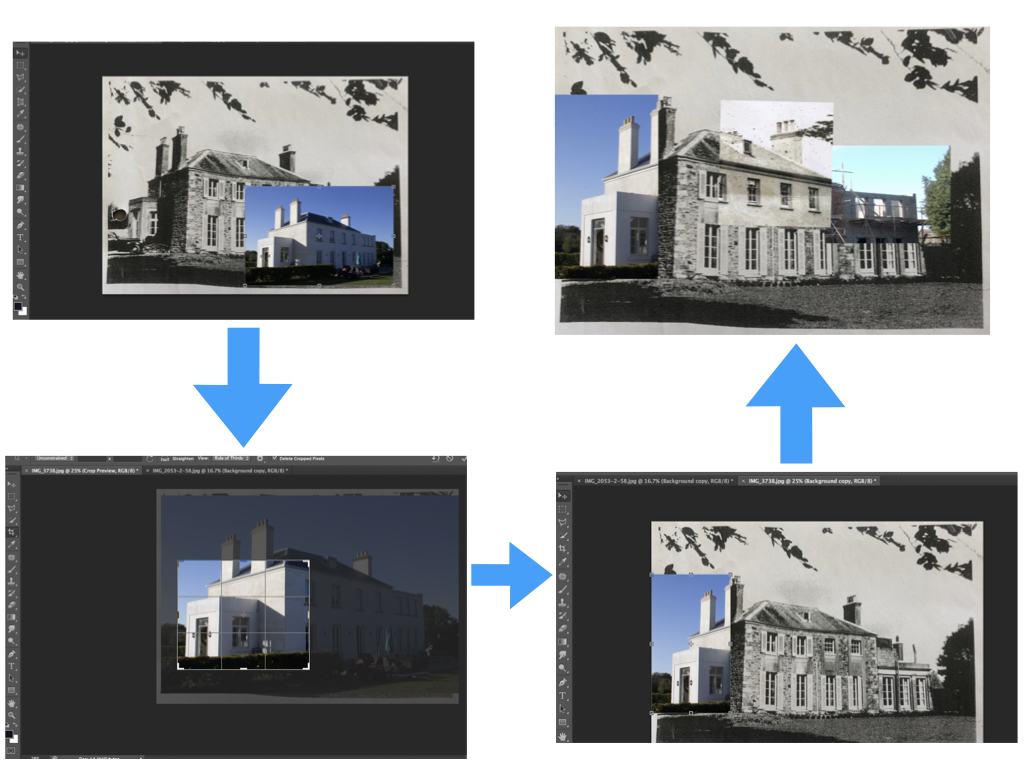
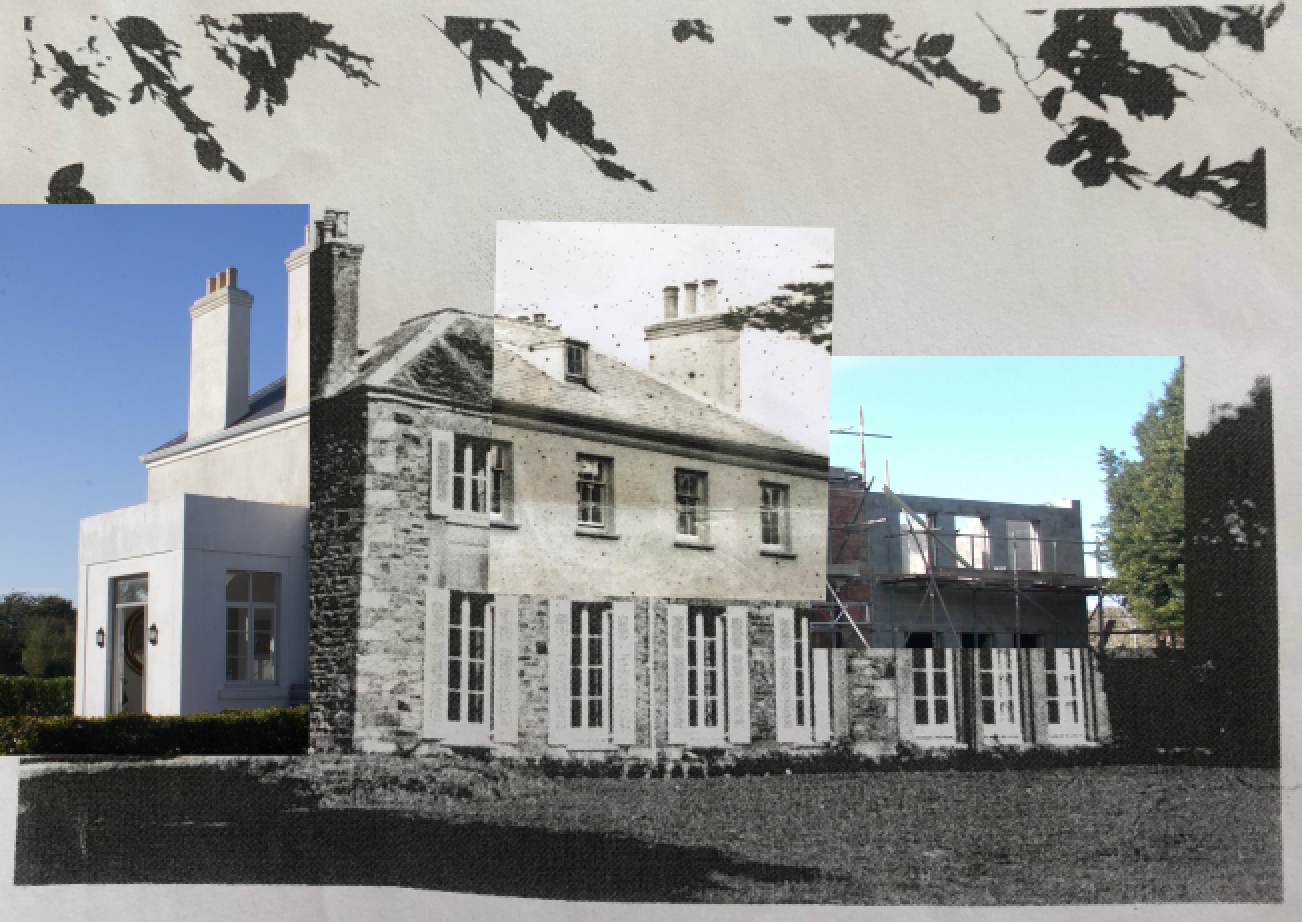
Technique 2
For this technique I will look at splitting the two photographs half and half or into thirds or quarters if there is more photographs to compare.
I will do this by first choosing a photograph to be the base photograph that the other photographs will be pasted over. I will then crop the other photographs to be roughly a half/third of the whole compostion. I will then paste the photographs onto the base photograph and look at altering them slightly to realign them in order to create a more accurate composition. As with technique 1, if I go through with this technique I will edit features such as the brightness of the photographs before hand to ensure that the photographs fit together well as well as spending more time aligning the photographs to create the most accurate collage possible.
I like this technique as it allows me to create clearly set out the contrasts and similarities over time but I feel as though this technique has a similar approach to technique 1 except that it slightly restricts what I can do with the compositions and where I can place the photographs.
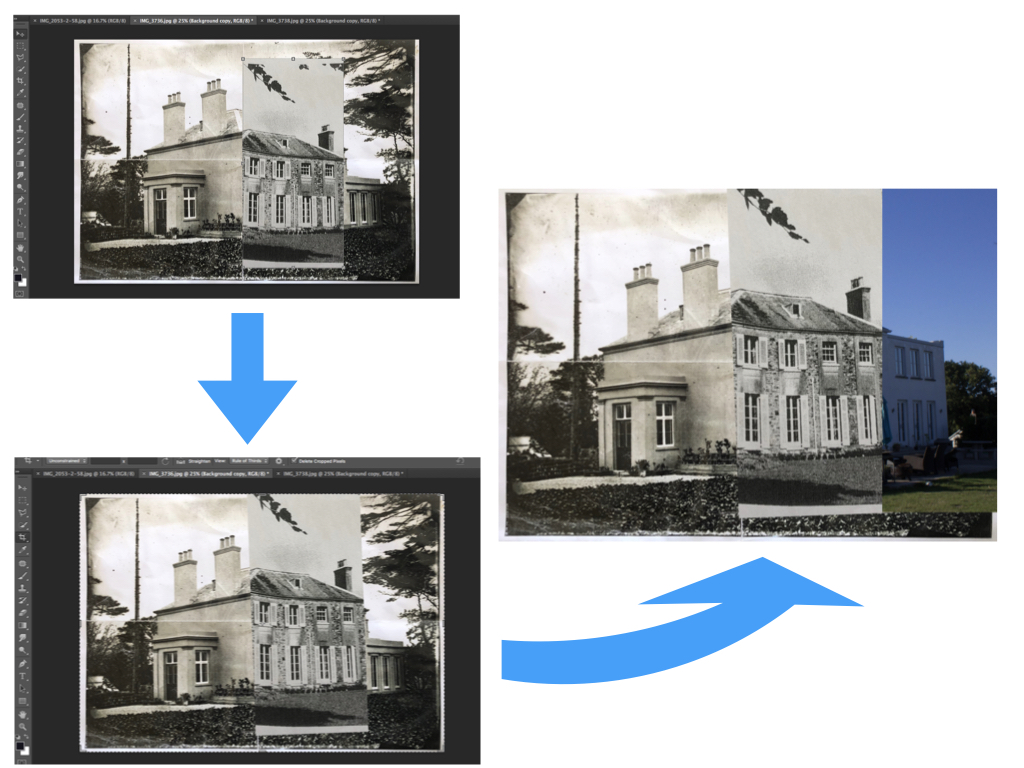
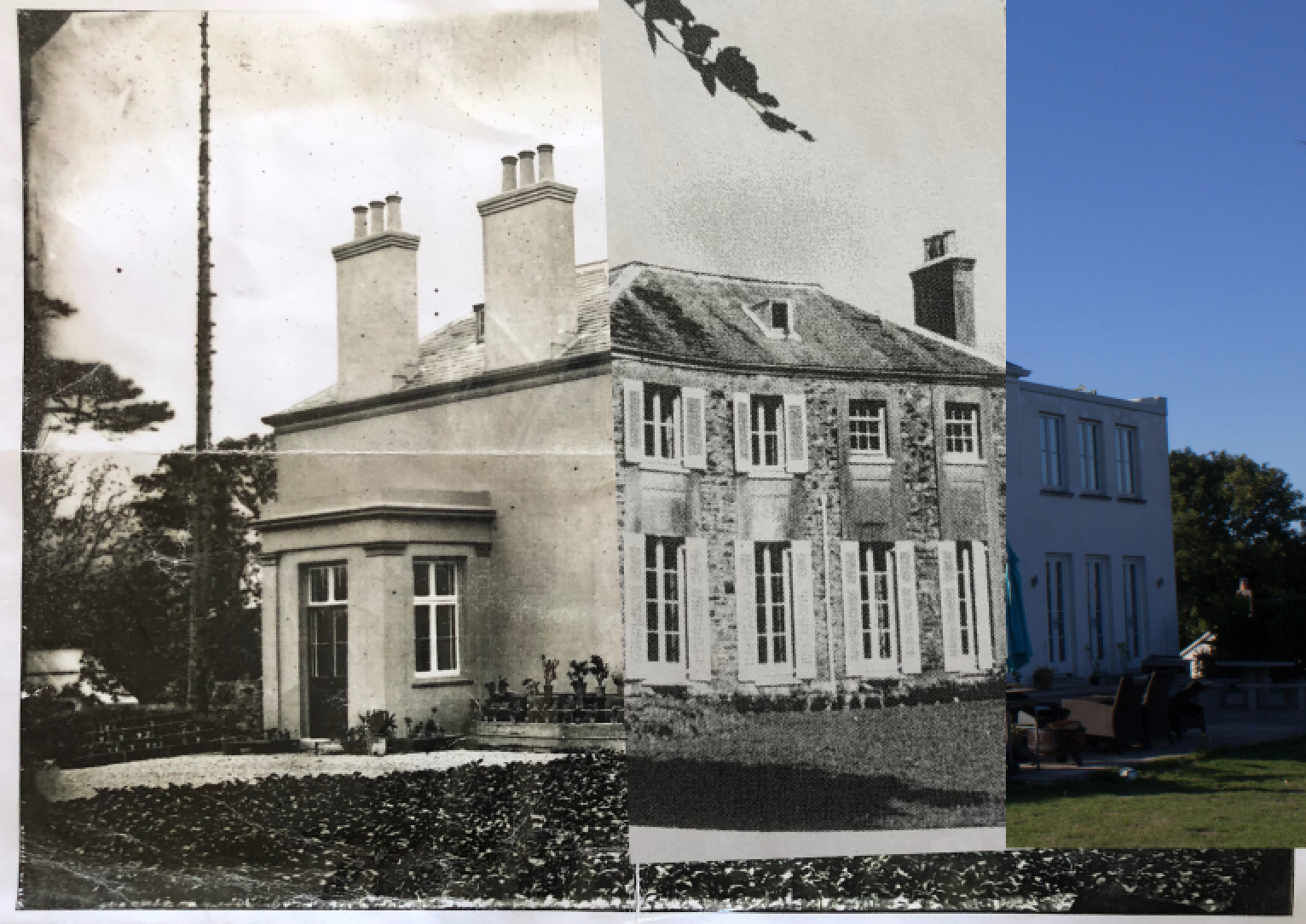
Technique 3
For this technique I will look at incorporating a more personal factor to the composition through the inclusion of how the property is being used meaning the way in which it is decorated. This gives a further insight into how the use and appearance of the property has changed throughout time. I will be taking natural frames, such as a mirror for example, and placing both archival and new photographs within the frame to give another element of how the land use has changed.
I will do this by first choosing the base photograph containing the natural framing. I will then paste the photographs chosen over the top of the base photograph and crop/alter the photographs so that they sit well in the natural frame. This will create further contrast between the old and new by showing a personal aspect of the decorations within the property.
I like this technique as it allows me to delve deeper into the use of the property and how the fashion and style of property design has changed over time. This technique can also be mixed with technique 1 as I can place the results from technique 1 into the natural frames to again add another sense of personalisation and to further show the similarities and differences that occur over time. This technique allows me to be as creative as I like with my compositions, as does technique 1, as I can place the photographs in any sequence that I choose but still create a feeling of organisation through the natural framing.
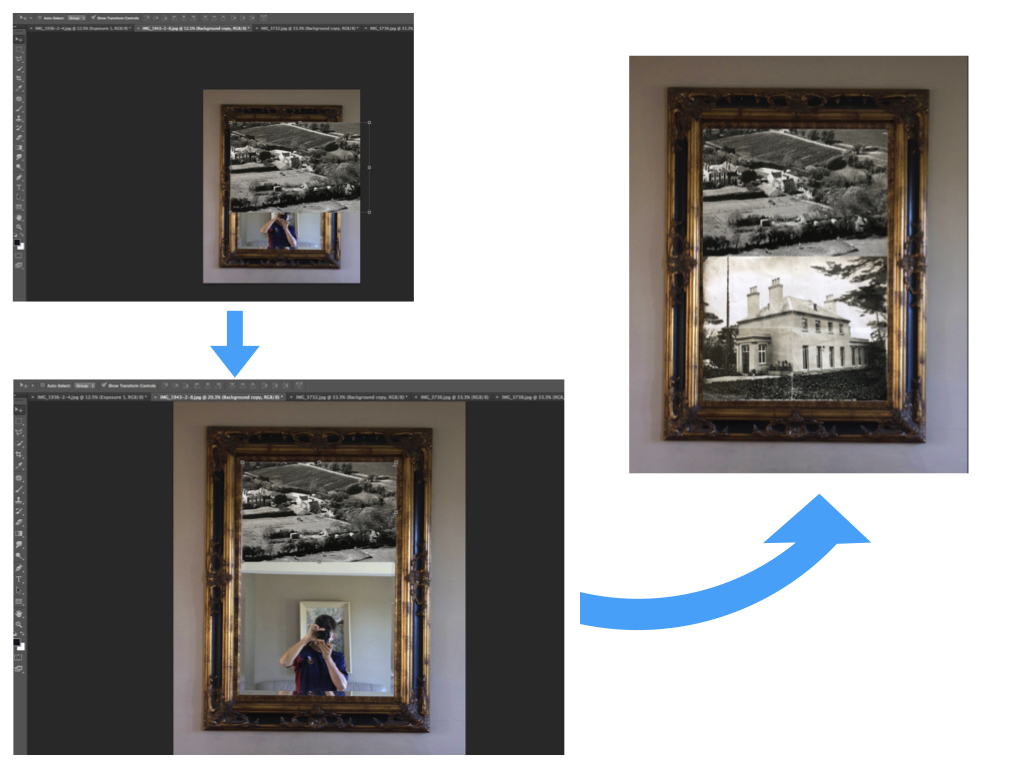
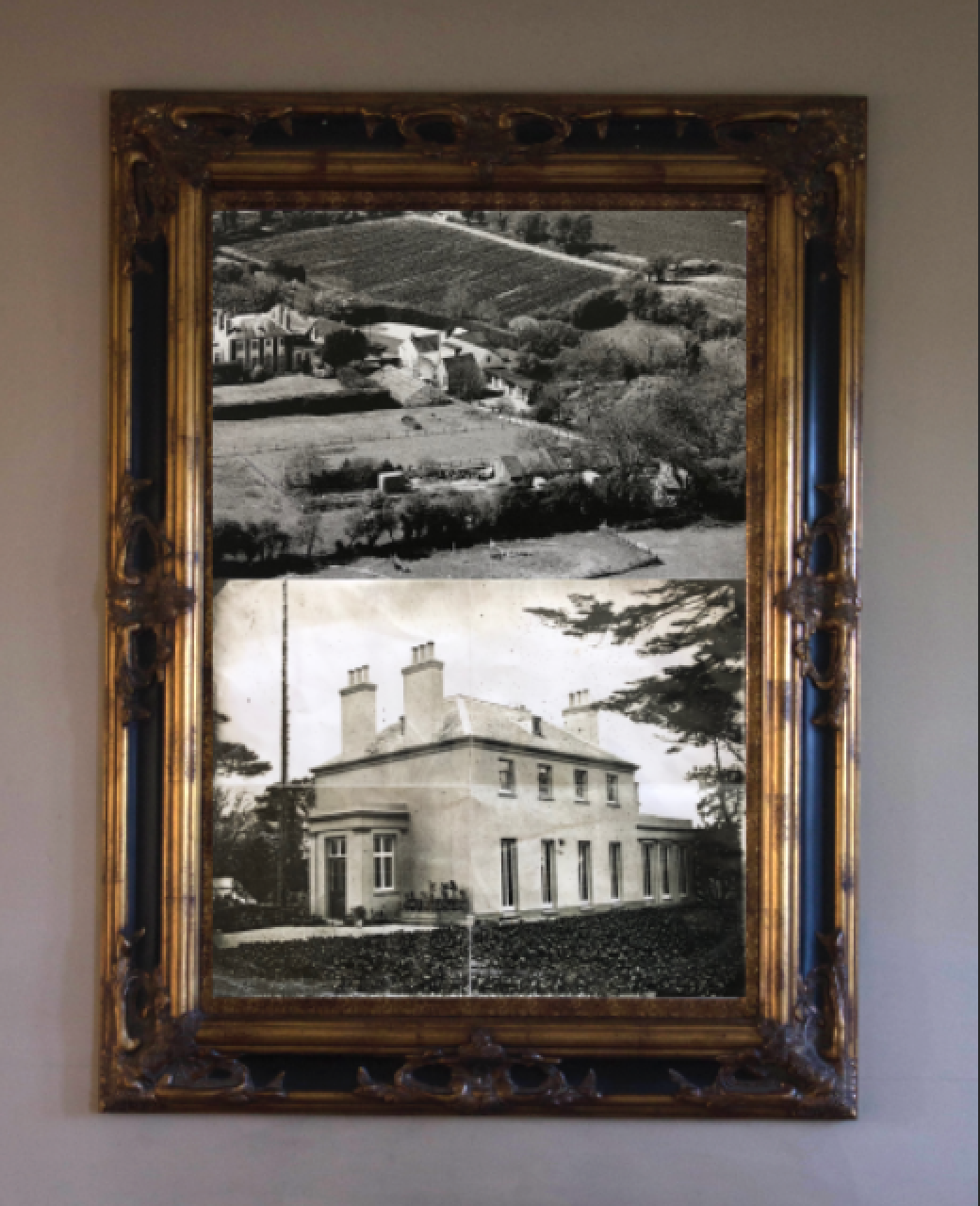



 To fit the theme, I also incorporated the use of black in the cover.
To fit the theme, I also incorporated the use of black in the cover.

